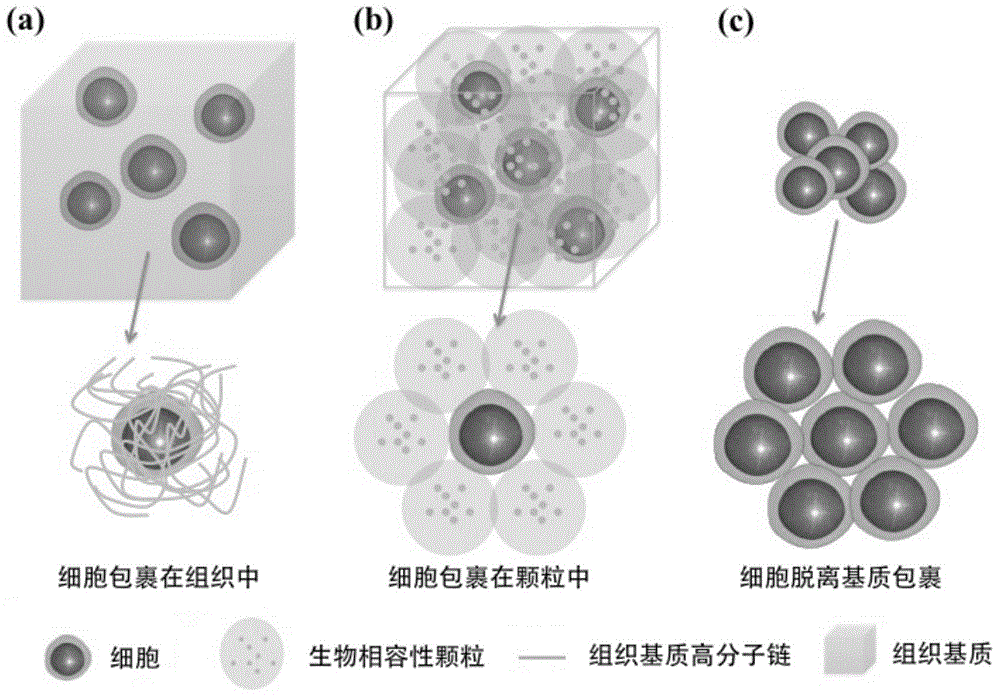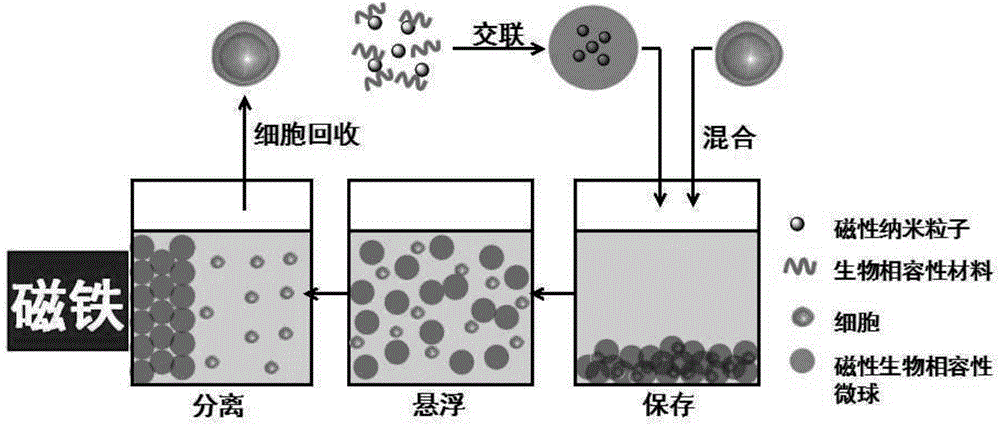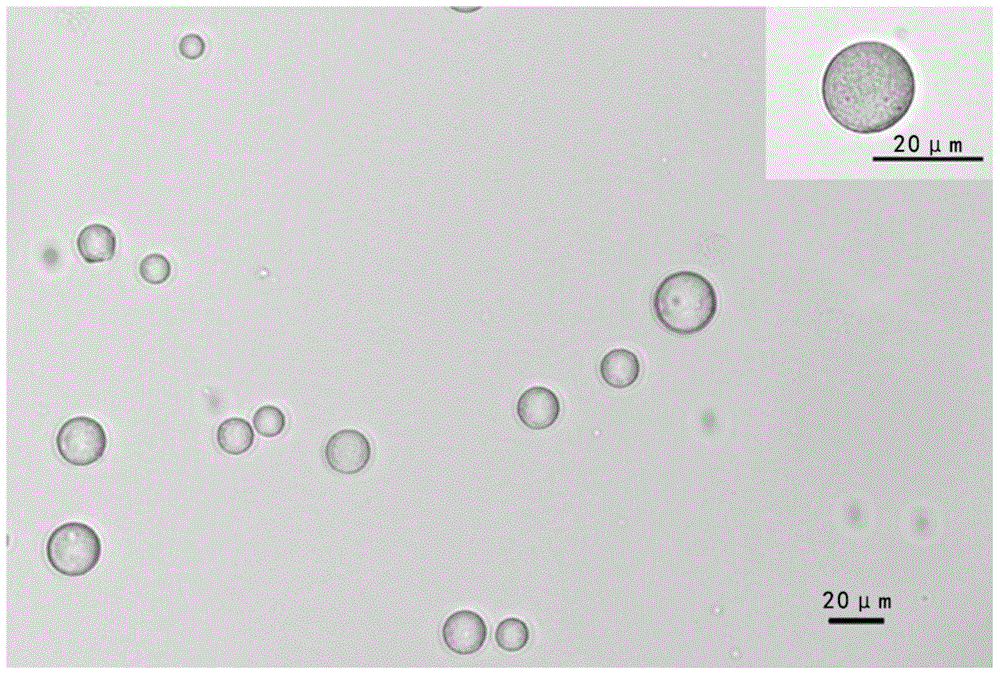Method for cell preservation by use of biocompatible particles
A biocompatible and biocompatible technology, applied in the field of using biocompatible particles to preserve cells, can solve the problems of shortage of cell transportation methods and low efficiency, and achieve strong ability to preserve cells, high preservation efficiency, separation and Save easy effects
- Summary
- Abstract
- Description
- Claims
- Application Information
AI Technical Summary
Problems solved by technology
Method used
Image
Examples
Embodiment 1
[0025] (1) Use synthetic biocompatible material polyvinyl alcohol microspheres to preserve cells
[0026] Select 30 mg of polyvinyl alcohol microspheres, disperse them into 15 mL sterile centrifuge tubes with RPMI-1640 medium, and take 10 6500 μL of a cell suspension of adherent human umbilical vein endothelial cells HUVEC was dispersed into a centrifuge tube, mixed evenly with microspheres and centrifuged at 800 rpm for enrichment. Immediately after mixing, the cell survival rate was measured by fluorescent staining method, and the survival rate was found to be 100%.
Embodiment 2
[0029] (1) Using magnetic natural biocompatible material sodium alginate microspheres to preserve cells
[0030] Select 10 mg of magnetic sodium alginate microspheres, disperse them into 15 mL sterile centrifuge tubes with RPMI-1640 medium, and take 10 6 500 μL of the suspension of adherent human lung cancer cells GCL-82 cells was dispersed into a centrifuge tube, mixed evenly with microspheres, and centrifuged at 500 rpm for enrichment. Immediately after mixing, the cell survival rate was measured by fluorescent staining method, and the survival rate was found to be 100%.
[0031] Place the centrifuge tube containing the cells and microspheres in a carbon dioxide incubator at 37°C for constant temperature cultivation. Regularly detect the viability of the cells in the centrifuge tube by fluorescent staining to determine the viability of the cells. After 15 days, if Figure 4 As shown, the survival rate was as high as 88.79%.
[0032] (2) Separate magnetic microspheres to o...
Embodiment 3
[0035] (1) Using magnetic natural biocompatible material dextran microspheres to preserve cells
[0036] Select 80 mg of magnetic dextran microspheres and disperse them into 15 mL sterile centrifuge tubes with RPMI-1640 medium, take 10 5 500 μL of a suspension of adherent human lung cancer cell A549 cells was dispersed into a centrifuge tube, mixed with microspheres and enriched by centrifugation at 2000 rpm. Immediately after mixing, the cell survival rate was measured by fluorescent staining method, and the survival rate was found to be 100%.
[0037] Place the centrifuge tube containing cells and microspheres in a biochemical incubator at 25°C for constant temperature cultivation. The survival rate of the cells in the centrifuge tube was regularly detected by fluorescent staining to determine the survival state of the cells. After 15 days, the survival rate was similar to the result in Example 2.
[0038] (2) Separate magnetic microspheres to obtain cells
[0039] Suspen...
PUM
 Login to View More
Login to View More Abstract
Description
Claims
Application Information
 Login to View More
Login to View More - R&D
- Intellectual Property
- Life Sciences
- Materials
- Tech Scout
- Unparalleled Data Quality
- Higher Quality Content
- 60% Fewer Hallucinations
Browse by: Latest US Patents, China's latest patents, Technical Efficacy Thesaurus, Application Domain, Technology Topic, Popular Technical Reports.
© 2025 PatSnap. All rights reserved.Legal|Privacy policy|Modern Slavery Act Transparency Statement|Sitemap|About US| Contact US: help@patsnap.com



